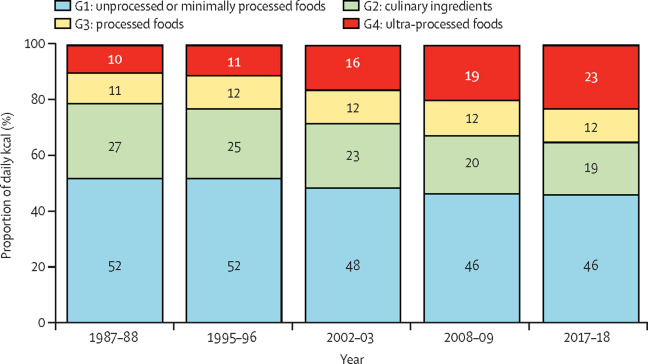A discussion of how well indigenous people should be compensated if their land needs to be developed.
An Article in support of SDGs 12 and 13, assessing greenhouse gas emissions, water footprint, and ecological footprint of different food types in Brazil, with a particular focus on ultra-processed foods
Deforestation in Ituna/Itatá Indigenous Land increased 654% between 2018 and 2019. 94% of Ituna/Itatá has been claimed in the Brazilian Rural Environmental Registry. Belo Monte dam and Belo Sun mining project cause land speculation in Ituna/Itatá. Brazilian government policies threaten forest protection and indigenous peoples. Unilateral land tenure regulation would obstruct Indigenous Lands demarcation.
Correspondence on the factors behind low COVID-19 immunisation coverage among marginalised communities in Latin America and the Caribbean, in the context of SDGs 3 and 10, highlighting the need to consider the specific circumstances of Indigenous communities in the development of national COVID-19 immunisation campaigns.
Objectives: This study aimed to determine whether there are differences in the language used in grant applications submitted to a Southern Brazil Research Support Foundation (FAPERGS) according to the gender, career stage, and the number of publications of applicants. Study Design and Setting: This observational study also evaluated the relationship between gender, career stage, curriculum, and writing characteristics.
Vanadium (V) toxicity depends on its oxidation state; it seems that vanadium pentoxide (V2O5) is the most toxic to the living cells. It has been reported that oral administration induces changes in motor activity and learning; in rats, I.P. administration increases lipid peroxidation levels in the cerebellum and the concentration of free radicals in the hippocampus and cerebellum.
Background: The effects of the COVID-19 pandemic on mental health have been understudied among vulnerable populations, particularly in fragile and conflict-affected settings. We aimed to analyse how the pandemic is related to early changes in mental health and parenting stress among caregivers, many of whom are internally displaced persons (IDP), in a conflict-affected setting in Colombia. Methods: For this cohort study, we used longitudinal data from a psychosocial support programme in which 1376 caregivers were randomly assigned across four sequential cohorts.
Background: COVID-19 spread rapidly in Brazil despite the country's well established health and social protection systems. Understanding the relationships between health-system preparedness, responses to COVID-19, and the pattern of spread of the epidemic is particularly important in a country marked by wide inequalities in socioeconomic characteristics (eg, housing and employment status) and other health risks (age structure and burden of chronic disease).
Slow onset processes have been increasingly linked to human mobility in the global policy space. Yet, land and forest degradation and desertification (LFDD) as a driver of human displacement and its implications for long-term development policy have received less attention. This paper aims to fill this gap by investigating to what extent the topic has been integrated into the national climate and desertification policy frameworks of countries in Latin American and the Caribbean – a region threatened by significant LFDD.
This review article assesses evidences published in the past two years on the links among slow-onset events, food security and poverty as well as the strategies focused on reducing specific problems, those implemented in the countries of the Latin America and the Caribbean (LAC) region. It is here, where slow-onset events related to Climate Change pose significant challenges intricately linked to poverty and food security; mainly as a result of a great economic and social dependence, strongly conditioned by environmental factors.

